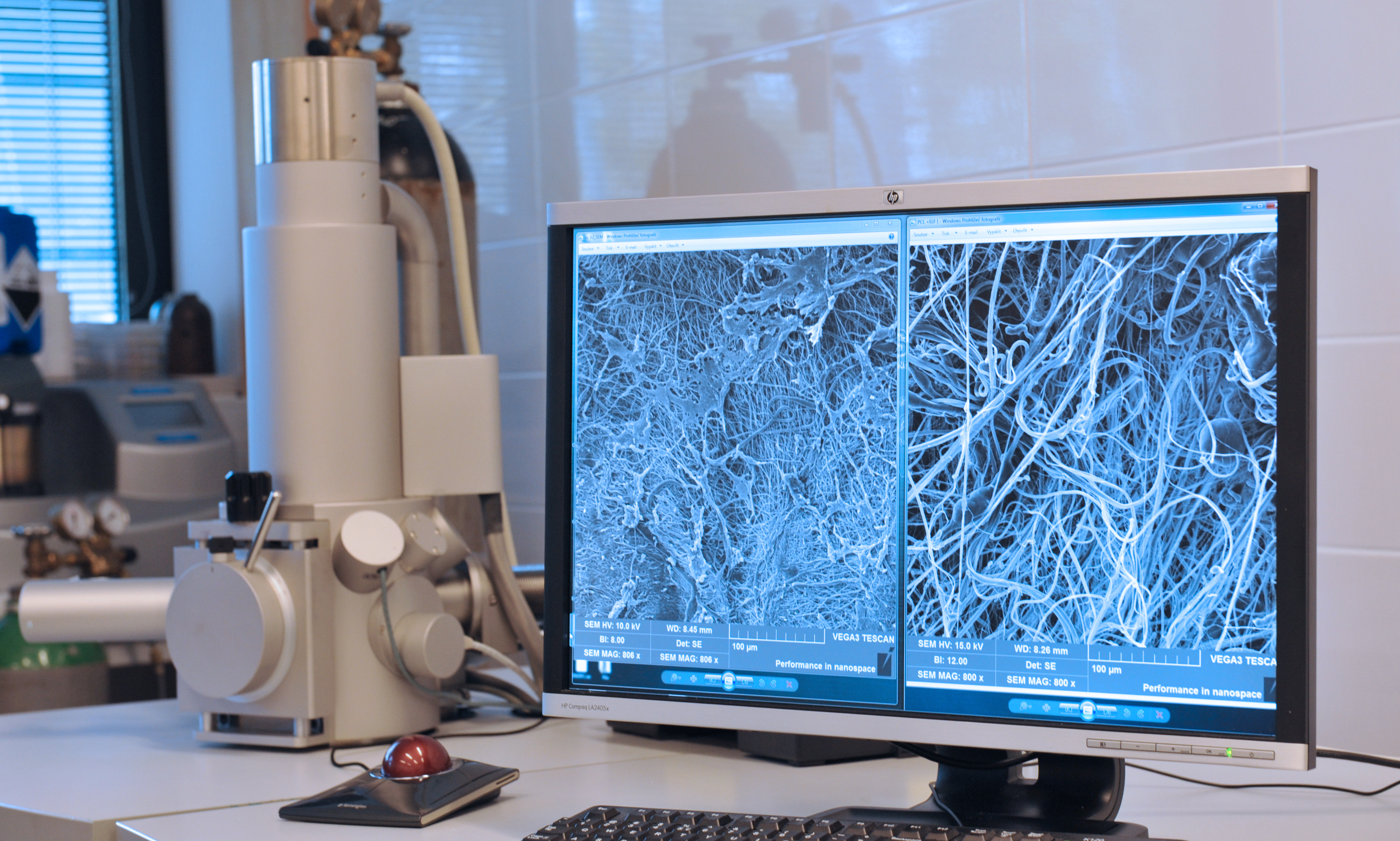

The CTU University Centre for Energy Efficient Buildings tested in its laboratories the possibilities of using nanofibers in the detection of small foreign particles in gas, such as viruses or bacteria in human breath. The tests were commissioned by ProNanoTech, which will use the knowledge gained for the development of a new product.
The project was divided into two parts. The first of them was focused on the possibilities of capturing the change in electrical parameters (capacity and resistance) of nanofibers during their artificial treatment with cigarette smoke. The measurements showed that different samples can show a change in electrical characteristics after being smelled, especially in specific frequency ranges.
In the next part of the project, emphasis was placed on the capture of molecules that cause a visible change in the color of samples prepared on the basis of nylon fibers with the addition of a dye. According to our findings, these allow signaling and detecting acidic air and water environments by causing them to turn blue.
The prepared samples were able to repeatedly reversibly switch between their colored and colorless forms, based on the presence and concentration of free H+ protons and the acidity of the environment in which they were found. The analysis of the presence of characteristic molecules in an above-limit concentration should enable a simple, fast and cheap detection of particles, which has great potential for application in practice.
ProNanoTech implemented this project with support from the South Bohemian Business Vouchers program, which was announced by
the South Bohemian Science Park.
![[album/Products_Model_Product/571/optickazmenananovlakenvkyselemprostredi.png]](https://c.uceeb.cz/images/album/Products_Model_Product/571/optickazmenananovlakenvkyselemprostredi.png)
Photo Caption: Photographs of nylon 6 fibers with CVL dye prepared by spin spinning in an environment (A) without acid vapors,
(BE) with methanoic acid vapors, (B) for 3 seconds, (C) for 5 seconds, (D) for 8 seconds, (E) for 12 seconds, (F) 120 seconds
after venting methanoic acid vapors.